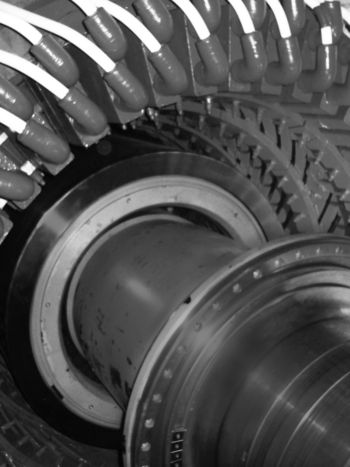Wide Area Monitoring Protection and Control Systems – Decision Support for System Operators
This Technical Brochure complements the work documented in the TB 750 titled “Wide Area Monitoring Systems – Support for control room applications” while describing additional developments done in the meantime in the field as well as describing more details with respect of Wide Area Monitoring including Control and Protection application tools.
Members
Convenor (CH)
W. SATTINGER
Secretary (CH)
A. DERVISKADIC
T. BABNIK (SI), K. KIRIHARA (JP), L. BADESA (ES), C. LANG (US), J. CABRERA (PE), M. LENZ (AT), R. ERIKSSON (SE), A. LITZINGER (DE), E. FARANTATOS (US), C. LIU (CN), R. FERNANDES (BR), T. MACHABE (ZA), S. FUKUI (JP), M. NAGLIC (NL), A. GAUTAM (IN), K. NARENDRA (CA), S. GHIOCEL (US), J. PÉREZ CASTRO (ES), G. GIANNUZZI (IT), L. PHILIPPOT (FR), J. GUERRA (PE), C. PISANI (IT), J. GUEST (AU), R. RUBESA (HR), E. HILLBERG (SE), S. SKOK (HR), C. HOSU (AU), A. SRIVASTAVA (US), D. ILISIU (RO), F. WEN (CN), P. JACOBS (NL), D. WILSON (GB), C. JAHNKE (DE), D. ZWERGEL (US), M. KEZUNOVIC (US)
The energy transition introduces profound changes to the dynamic performance of the power system and to the uncertainties and stability issues to be managed. In light of these changes, the conventional Supervisory Control and Data Acquisition (SCADA) systems are becoming inadequate for reliable power system operation. Consequently, synchronised measurement technologies that reflect the increasingly complex behaviour of the power system are a necessity for observing and controlling the grid, and for learning from experience of disturbances and outages. Synchronised phasor measurements offer a much higher resolution real-time view of the power system that can be used in a wide range of control room and engineering support tools, as well as for closed-loop automated controls for the stability and efficient use of the power system.
Wide Area Monitoring (WAM) systems use synchrophasor measurements as their core data sources, and are well established as a necessary tool for power system operators and analysts to run the power system and diagnose its problems and weaknesses, particularly form the dynamic stability point of view. WAM systems have been in use within Transmission System Operators (TSO) environments worldwide for more than fifteen years, and significant experience has been accumulated. Consequently, the Phasor Measurement Unit (PMU) technology has been developed through on-going fruitful dialogue between system operators, manufacturers and Universities. Much of the insight into large-scale, complex disturbances in power systems in recent years is derived primarily from WAM systems.
As a natural evolution Wide Area Monitoring, Protection and Control (WAMPAC) systems are tailored to perform system-wide coordinated protection and control, for example to prevent or mitigate the propagation of large disturbances in an interconnected power system and to improve stability. In the last two decades the insights into past large-scale disturbances have stimulated research and industry to invest more in development of closed-loop WAMPAC applications, which are crucial for the safeguarding of the power system reliability.
Decision processes using synchrophasor measurements can be considered in various timeframes, for example:
- Operational guidance for real-time control room operators, typically 5–15-minute processes using clearly defined alarms and operational procedures
- Automation action without a human in the loop, which may be
- Fast, direct WAMPAC, typically <0.5 s response to triggers
- Dispatch changes initiated by WAM systems via the SCADA/EMS (Supervisory Control and Data Acquisition and Energy Management System), typically <1 minute cycle
- Post-event understanding of disturbances and improved restoration, typically within hours or days of the event
- Long-term stability improvement by design, in which WAM systems provide the analytics for in-depth identification and analysis for improving the security and resilience of the power system.
This Technical Brochure examines the infrastructure, applications, integration and practical experience gained over years of applying WAM and WAMPAC systems in real-world installations. The brochure discusses control room applications, including power system oscillation monitoring, voltage phase angle difference monitoring, voltage profile monitoring, and system frequency monitoring (Figure 1). The flexibility and scalability of PMU data, as well as the architecture and data sharing among interconnected TSOs, are explored. Harmonization efforts, alarm recommendations, and the use of PMUs in special protection systems and power system emergency operations are discussed. Testing, validation, and compliance testing with WAM/WAMPAC tools are addressed, along with minimum requirements for communication channels. The brochure concludes with recommendations for further research and development, focusing on novel PMU applications, next-generation power systems, and data analytics and communications.

